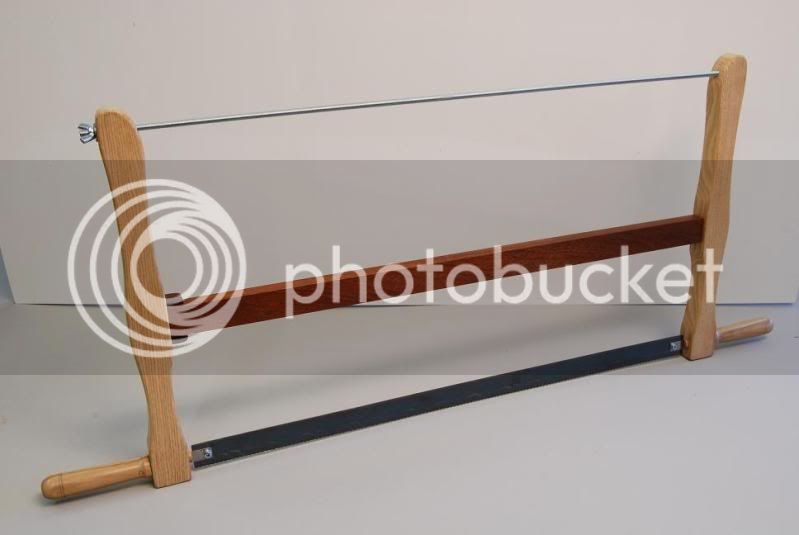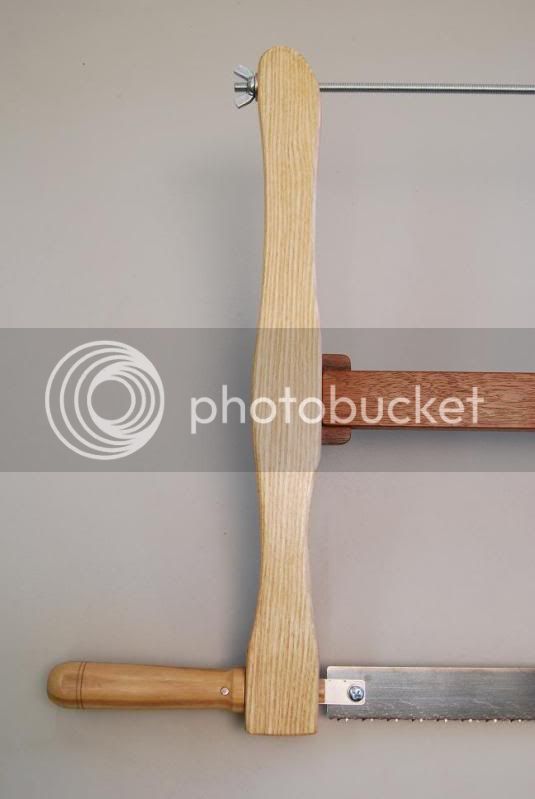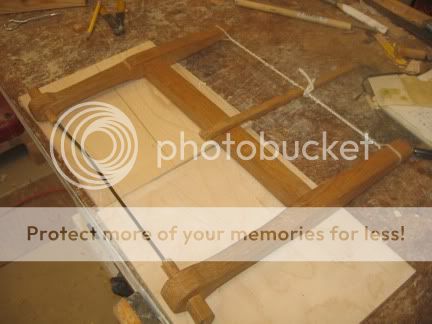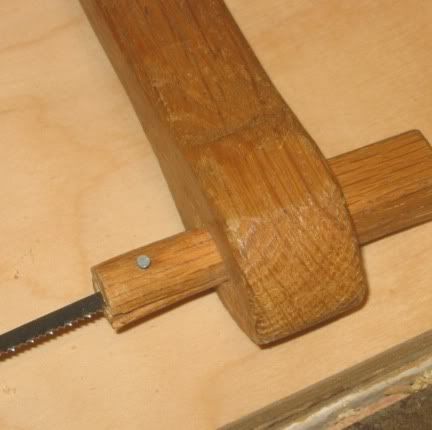condeesteso
Established Member
Hi all - I soon plan to make myself a frame saw, probably a 600mm to start, maybe a bigger 700 later. Jim's bow saw inspired me, but Frank Clausz did a feature on the big ones in Pop Woodworking ages ago and I have fancied a bigger frame saw ever since.
QUESTION - when the bow saw was discussed here, BB I think mentioned a taper fit for the blade fixing shafts at both ends (OK - what's its name then :lol: ). As I am considering finding a model engineer to turn up those components for me (the guys that build miniature steam engines etc) I don't want to experiment re taper -any ideas what may be right. I am assuming a hardened brass with steel pins for the blade, and suspect the taper should be reasonably steep to avoid it jamming / locking up. The taper is there to hold blade angle once you set it and tension the saw.
Dieter Schmid has the blades I think:
http://www.fine-tools.com/gestell.htm
The frame is interesting - I would use yew if I could find the right bits (Jim won't mind ) - and aim to keep the weight down. Traditional cord tensioning with sliding toggle so you can make 1/2 turn adjustments.
) - and aim to keep the weight down. Traditional cord tensioning with sliding toggle so you can make 1/2 turn adjustments.
Any ideas, particularly re the taper??
QUESTION - when the bow saw was discussed here, BB I think mentioned a taper fit for the blade fixing shafts at both ends (OK - what's its name then :lol: ). As I am considering finding a model engineer to turn up those components for me (the guys that build miniature steam engines etc) I don't want to experiment re taper -any ideas what may be right. I am assuming a hardened brass with steel pins for the blade, and suspect the taper should be reasonably steep to avoid it jamming / locking up. The taper is there to hold blade angle once you set it and tension the saw.
Dieter Schmid has the blades I think:
http://www.fine-tools.com/gestell.htm
The frame is interesting - I would use yew if I could find the right bits (Jim won't mind
Any ideas, particularly re the taper??





































